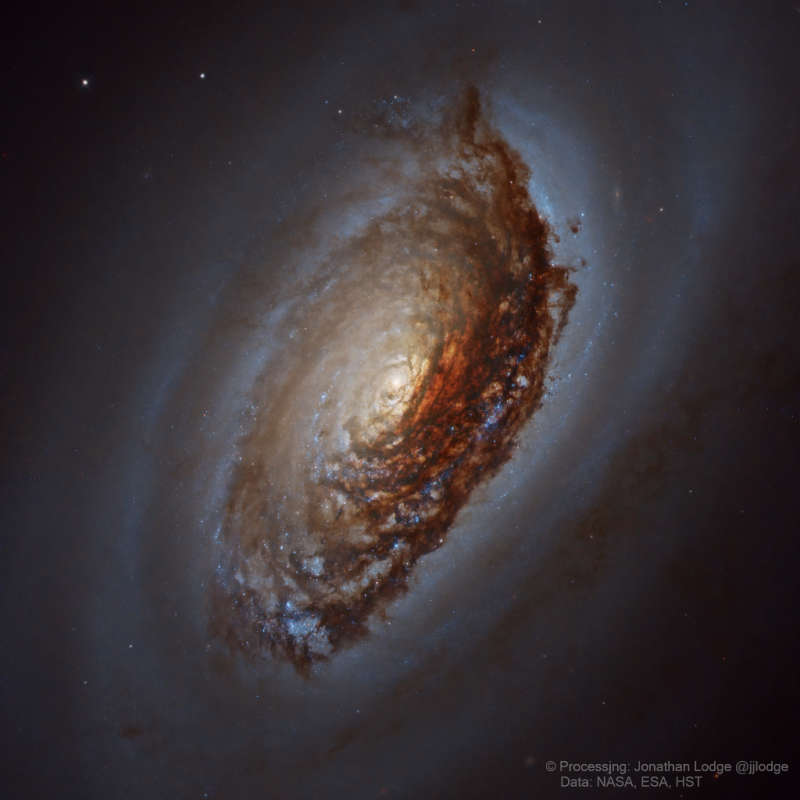
|
Explanation: This magnificent spiral galaxy is Messier 64, often called the Black Eye Galaxy or the Sleeping Beauty Galaxy for its dark-lidded appearance in telescopic views. The spiral's central region, about 7,400 light-years across, is pictured in this reprocessed image from the Hubble Space Telescope. M64 lies some 17 million light-years distant in the otherwise well-groomed northern constellation Coma Berenices. The enormous dust clouds partially obscuring M64's central region are laced with young, blue star clusters and the reddish glow of hydrogen associated with star forming regions. But imposing clouds of dust are not this galaxy's only peculiar feature. Observations show that M64 is actually composed of two concentric, counter-rotating systems. While all the stars in M64 rotate in the same direction as the interstellar gas in the galaxy's central region, gas in the outer regions, extending to about 40,000 light-years, rotates in the opposite direction. The dusty eye and bizarre rotation are likely the result of a billion year old merger of two different galaxies.
|
January February March April May June July August September October November December |
| |||||||||||||||||||||||||||||||||||||||||||||||||||||||
NASA Web Site Statements, Warnings, and Disclaimers
NASA Official: Jay Norris. Specific rights apply.
A service of: LHEA at NASA / GSFC
& Michigan Tech. U.
Based on Astronomy Picture
Of the Day
Publications with keywords: spiral galaxy - M 64
Publications with words: spiral galaxy - M 64
See also:
- Portrait of NGC 1055
- APOD: 2025 September 4 B NGC 4565: Galaxy on Edge
- APOD: 2025 August 22 B A Tale of Two Nebulae
- APOD: 2025 August 19 B Giant Galaxies in Pavo
- APOD: 2025 August 18 B NGC 1309: A Useful Spiral Galaxy
- APOD: 2025 July 4 B NGC 6946 and NGC 6939
- APOD: 2025 June 30 B NGC 4651: The Umbrella Galaxy
